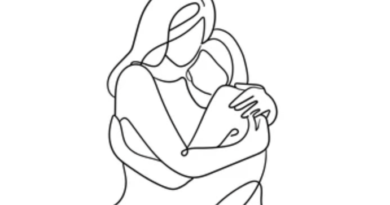Keeping up with you know who
What is the value of celebrity visits for the incarcerated? An editor reflects.

In late 2024, Kim and Khloé Kardashian, Scott Budnick, and Kris Jenner visited Richard J. Donovan Correctional Facility (RJD) in San Diego, California.
The group met with a large gathering of men sentenced to life without the possibility of parole to discuss a variety of topics. Two of the men in the group were Lyle and Erik Menendez, who generate headlines on their own. Combined with the Kardashians, the visit was guaranteed to make news, which it did.
The visit was covered by multiple news agencies, including television and print journalists. Entities like Variety, The Hollywood Reporter, TMZ, The Independent, LADBible, People, US Weekly and Marie Claire all reported on the event.
Contrast that with the visit paid to Central California Women’s Facility (CCWF) and Valley State Prison in early 2024. Kim and Khloé Kardashian, accompanied by Budnick and two of their friends, visited a group of long-term CCWF residents. The group discussed the different
issues facing women, some of the reasons women commit crimes, and how the California Model is being implemented at the prison.
Only local media noted that the Kardashians had been in California’s Central Valley and had visited the two prisons, and none reported in any meaningful way about their time with incarcerated women.
Nevertheless, the CCWF visit was filmed by CCWF staff as well as the Kardashians’ camera crew for their reality show, “The Kardashians.” The episode aired on Hulu on July 17, 2024.
When participants introduced themselves, they spoke about their lives of living amends, their educational achievements, their peer advocacy — including assisting others through the post-conviction appellate process — and their desire to facilitate self-help curricula.
In turn, Anti-Recidivism Coalition life coach Lynne Acosta asked participants how many individuals present were young adults when they committed their crimes, how many had male co-defendants, how many were survivors of domestic violence, and what they’re most proud of or things that bring them hope. The entire visit lasted approximately 45 minutes.
Once the episode was edited and aired, CCWF’s visit was summed up in 10 minutes. As someone who participated in the conversation, I was struck by how little of what the incarcerated women said was included.
In order to help showcase issues that are important to incarcerated women, hearing directly from them is incredibly important. For example, participants noted the evolution of California’s youth offender parole system, which recognizes the “hallmark features of youth” that the United States Supreme Court outlined over a decade ago in Miller v. Alabama, prohibiting judges from automatically sentencing juveniles to life without the possibility of parole.
Those transient youthful attitudes, based on neuroscientific research, can lead to impulsive decision making but can also result in increased receptivity to rehabilitation. However, that legislative evolution has not extended to all longterm offenders in the state.
Despite their coverage, as far as we know, the visit has not yet resulted in any direct or widespread interest in advancing the causes of incarcerated women or making any relevant legislative changes.
I should note that in late February, Senate Bill 672 was introduced, which would extend the youthful offender parole system to young adult LWOPs. Having even a few minutes of Kardashian airtime devoted to women speaking on this issue could have an impact.
Maybe this shouldn’t surprise us. Women make up a much smaller percentage of the overall incarcerated population, even though, according to the Prison Policy Initiative, the United States houses more than 30% of the world’s incarcerated women as of 2018. And historically, incarcerated women have been less visible to society.
The famed feminist, political activist, and academic Angela Davis and co-author Cassandra Shaylor, an Oakland-based activist and attorney, wrote about this way back in 2001 in an essay for Meridians journal called “Race, Gender and the Prison Industrial Complex: California and Beyond.”
Davis and Shaylor point out that international human rights organizations had begun to “address the invisibility of women prisoners.” They also mention a handful of groups that were working to keep women’s issues in the public conversation even back 24 years ago, like Justice Now, which no longer exists; California Coalition for Women Prisoners; and Legal Services for Prisoners with Children.
Given the popularity of the TV show “Orange is the New Black,” as well as a never-ending stream of true crime novels and documentaries, people do seem curious about the experiences of incarcerated women. It is a good moment to push for greater awareness.
Celebrity visits could help with that, since they have an amplification power far beyond any prison activist groups or prison publications. I would love to encourage more celebrity visits for both CCWF and California Institution for Women (CIW).
After many years inside, I’ve come to welcome these visits over other types of tours, which can cause the prison to go on lock-down or leave us feeling looked at like zoo animals. The one critique I can foresee regarding celebrity visits is that participation is limited, so the majority of the population will feel left out.
The bottom line is that when celebrities tour prisons and lend their voices to causes affecting incarcerated individuals, real change can be made.
But this change should not be focused on men merely because they represent a larger portion of the incarcerated population. We, too, need a seat at the table.



